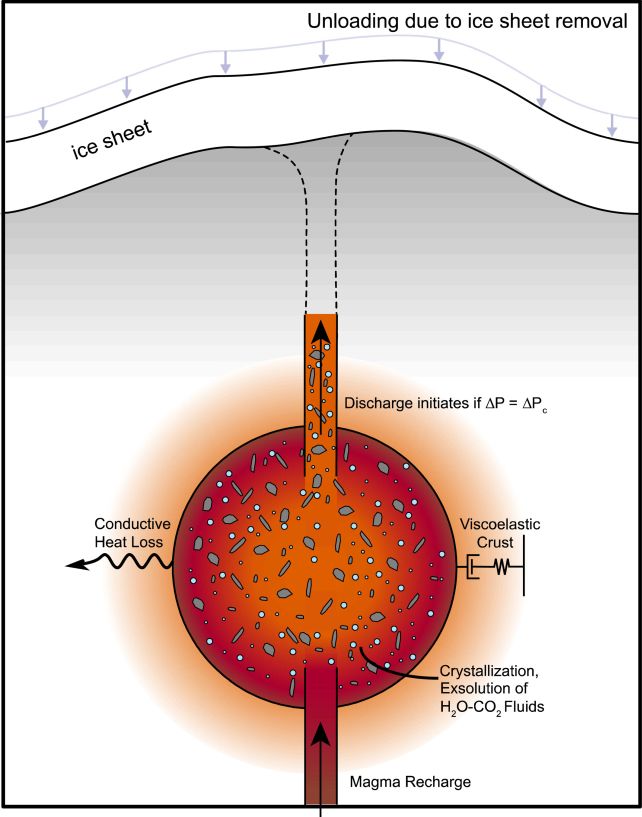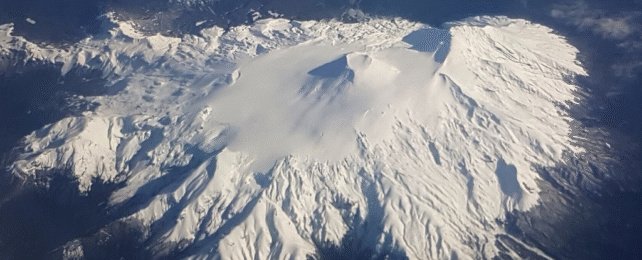The effects of climate change could awaken hundreds of volcanoes worldwide – which in turn could worsen the effects of climate change.
According to recent models that predict changes in the magma beneath Patagonia's glaciers, the retreat of ice has the power to shake subglacial volcanoes out of their slumber.
The world isn't at imminent risk of volcanic bombardment, but the findings suggest that today's rapid melting of glaciers could raise the risk of eruptions in the future.
This will likely occur over hundreds, if not thousands, of years, but it's always good to be prepared, especially for places like Antarctica, where more than 100 hidden volcanoes are currently trapped under ice.
Related: 'Zombie' Volcano in Bolivia Appears to Be Stirring Deep Underground
The study is based on the deep history of the Patagonian Ice Sheet, which once used to cover the southern tip of South America. More than 18,000 years ago, when the ice sheet was at its heaviest, magma pooled and crystallized some 10 to 15 kilometers (6 to 9 miles) beneath the surface.

As the climate warmed and glaciers melted, however, the pressure was off. Scientists think Earth's crust bounced upward without the weight of ice pressing down on it, and the gases in underground magma were allowed to expand – a key factor for volcanic eruptions.
Researchers analyzed samples from six volcanoes in Chile to learn more about their eruptive past. One of them, the Mocho-Choshuenco volcano, is now dormant, but according to recent data, its eruptive activity in the past was impacted by the advance and retreat of Patagonia's ice.
It took roughly 3,000 to 5,000 years before the region's ice 'unloading' led to explosive eruptions, so we probably have plenty of time to prepare.
As modern Patagonia loses more of its ice, however, parts of the land are rebounding at unexpectedly rapid rates, and that is worrying some scientists.
"Glaciers tend to suppress the volume of eruptions from the volcanoes beneath them," explains volcanologist Pablo Moreno-Yaeger from the University of Wisconsin-Madison, who presented the research at the Goldschmidt Conference.
"But as glaciers retreat due to climate change, our findings suggest these volcanoes go on to erupt more frequently and more explosively."
Scientists studying volcanoes and glaciers in Iceland have noticed a similar phenomenon, but this is one of the first studies to show the same forces at play on a continental scale.
"Our study suggests this phenomenon isn't limited to Iceland, where increased volcanicity has been observed, but could also occur in Antarctica," says Moreno-Yaeger.
"Other continental regions, like parts of North America, New Zealand, and Russia, also now warrant closer scientific attention."
In Antarctica, for instance, scientists have conducted simulations that show if too much ice melts, it could increase future eruptions.
Even if the magma doesn't break through the ice sheet completely, it could melt the structure from within.

"Over time the cumulative effect of multiple eruptions can contribute to long-term global warming because of a buildup of greenhouse gases," explains Moreno-Yaeger.
"This creates a positive feedback loop, where melting glaciers trigger eruptions, and the eruptions in turn could contribute to further warming and melting."
That's the sort of catastrophic future scientists want to see coming from a long way off. Otherwise, there may be no way to stop it.
The findings were presented at the 2025 Goldschmidt Conference in Prague.
